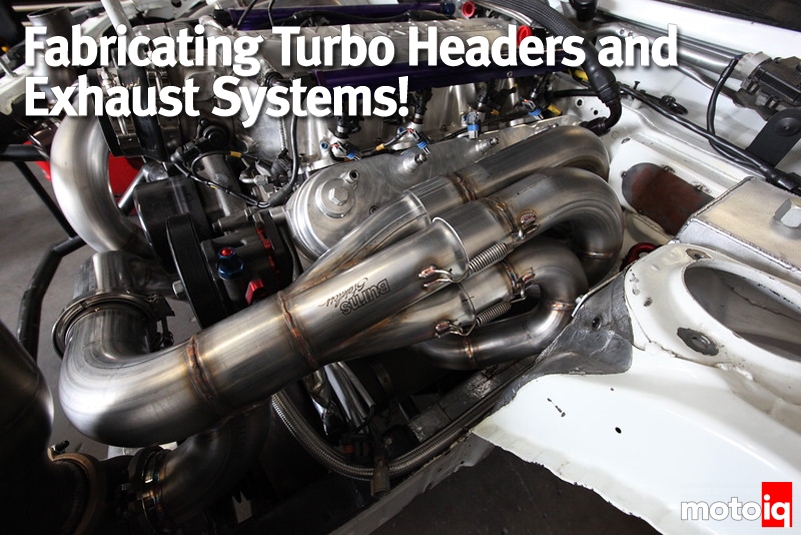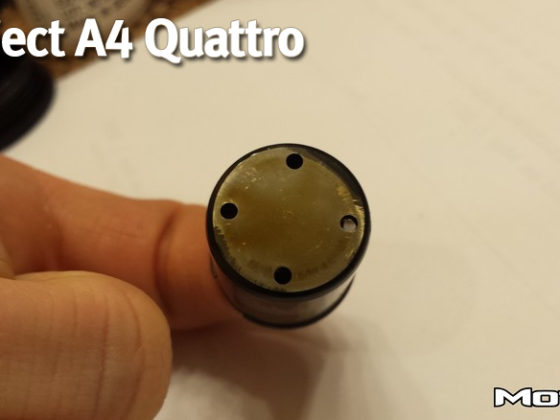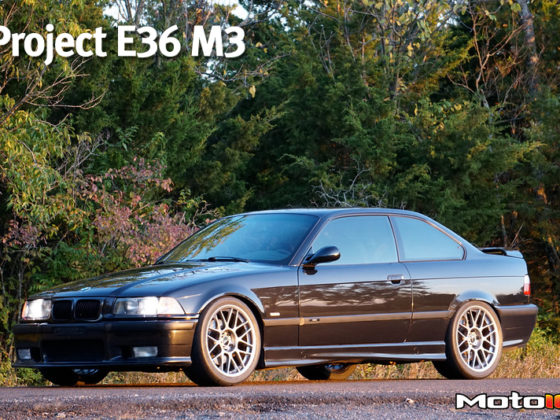,
 Chris Eimer marks the location of where he wants to weld the Turbosmart Race Port BOVs and the intake air temp sensor bung, checking hood clearance as he goes. These Turbosmart BOVs were used because they have a small footprint for the size of the valve. With almost 8 liters of flow to handle, they have to be big!
Chris Eimer marks the location of where he wants to weld the Turbosmart Race Port BOVs and the intake air temp sensor bung, checking hood clearance as he goes. These Turbosmart BOVs were used because they have a small footprint for the size of the valve. With almost 8 liters of flow to handle, they have to be big! Chris welds the BOV flanges in place on the intake charge tube.
Chris welds the BOV flanges in place on the intake charge tube. The intake charge pipe tube ends up being 12″ long. Pounds were saved just by eliminating several feet of charge piping. The whole front of the car is much cleaner without all the intercooler piping around. Vibrant Performance silicone hose couplers and T-bolt clamps were used on the intake pipe.
The intake charge pipe tube ends up being 12″ long. Pounds were saved just by eliminating several feet of charge piping. The whole front of the car is much cleaner without all the intercooler piping around. Vibrant Performance silicone hose couplers and T-bolt clamps were used on the intake pipe.  In this photo you can see the super clean charge pipe layout and the flex bellows that were added into the Y-pipe to prevent cracking.
In this photo you can see the super clean charge pipe layout and the flex bellows that were added into the Y-pipe to prevent cracking.  The exhaust system with the Embee Performance thermal barrier coating looks pretty spiffy even though we wish it could be left raw just for looks.
The exhaust system with the Embee Performance thermal barrier coating looks pretty spiffy even though we wish it could be left raw just for looks.  The new turbo system complete and ready to go. Now with the turbo moved back, we have room for a large and effective K&N air filter. Previously there was only room for a thin foam brillo pad filter of limited area. This was not only restrictive but it allowed some dirt and rubber fragments to enter the engine which did some cylinder wall damage.
The new turbo system complete and ready to go. Now with the turbo moved back, we have room for a large and effective K&N air filter. Previously there was only room for a thin foam brillo pad filter of limited area. This was not only restrictive but it allowed some dirt and rubber fragments to enter the engine which did some cylinder wall damage. The new turbo system was designed to accomplish these goals; to improve weight distribution, to mitigate potential crash damage, to ease maintenance by moving tubes away from engine components that need frequent checking or replacement, to reduce engine compartment heat soak, to get heat sensitive stuff like fluid lines, electronics, wires, wastegate cans and other things away from hot exhaust parts, to broaden the powerband and increase top end power and to make room to run an effective air filter.
With careful thought by Eimer Engineering, all of the design goals were accomplished. On top of improving all of the functional aspects of the turbo system, it even looks better!
Sources
Eimer Engineering
Burns Stainless
Garrett Turbochargers
Turbosmart
K&N
?Vibrant Performance
Bell Intercoolers
Embee Performance




3 comments
Nice, it looks so much cleaner and tidier. Ever thought of going twin-turbo? Cheers!
We wanted a more gradual onset of power that a single turbo produces, our previous experiments with twin turbos made a fast violent onset of power that made it hard to get the car to hook up out of turns. We also wanted to make things simple.
Thanks a lot for your reply, Mike. Some ‘a these young ‘uns might not value it, but I’m from a time where you could only pick the brains of the local gearhead, or library, or test your luck through trial and error. To have access to pros like you (and pick *their* brains) from halfway across the world is a privilege! Keep on truckin’. 😉